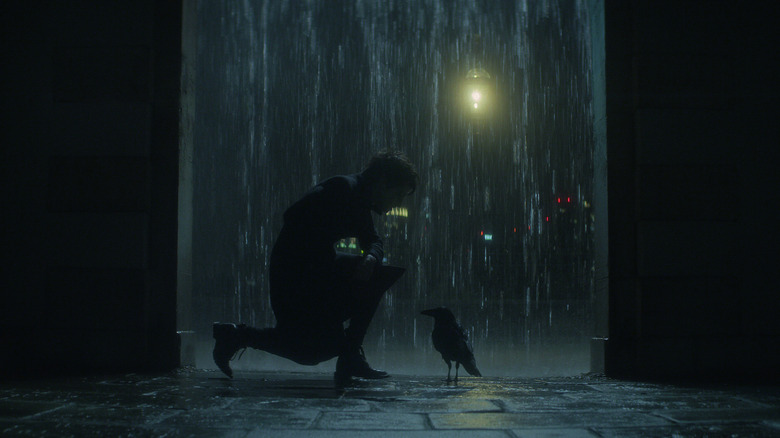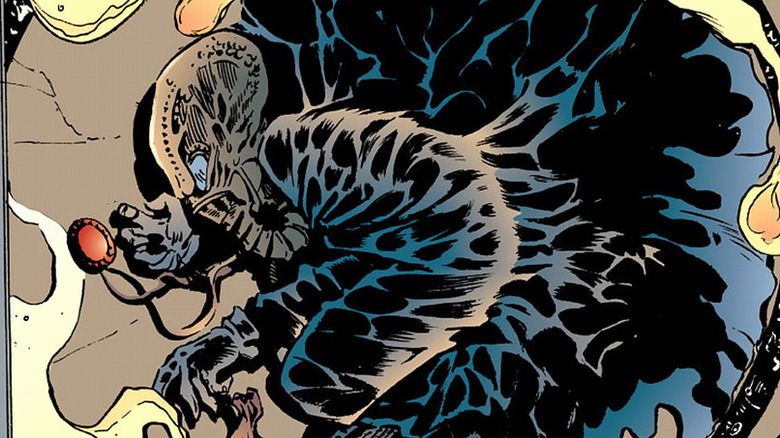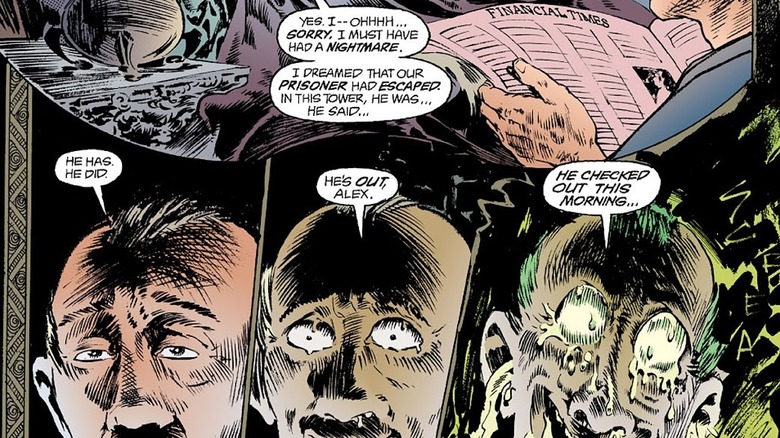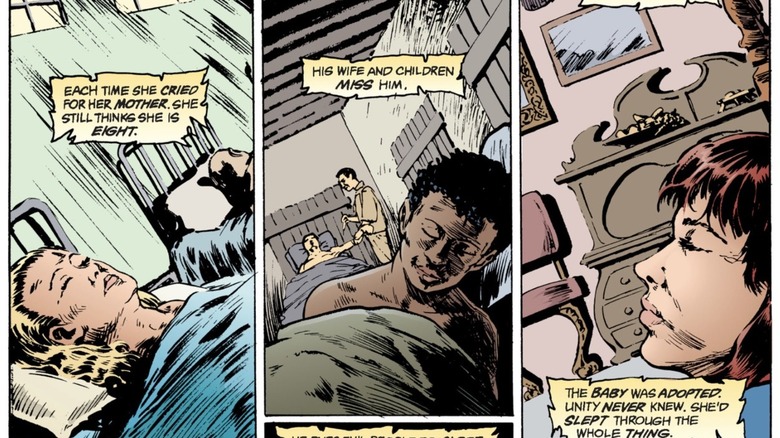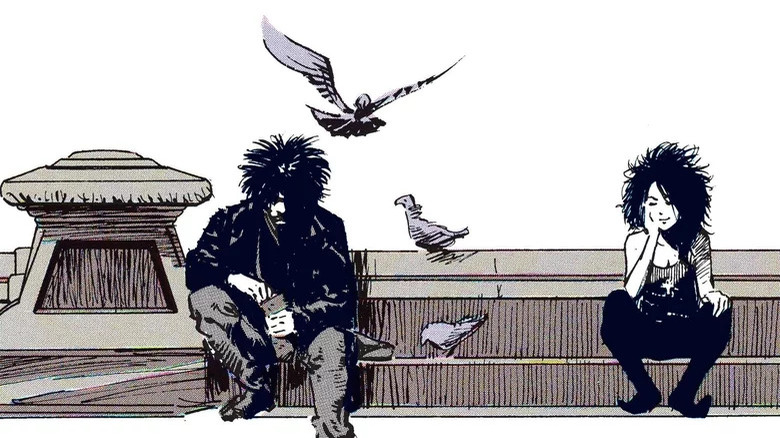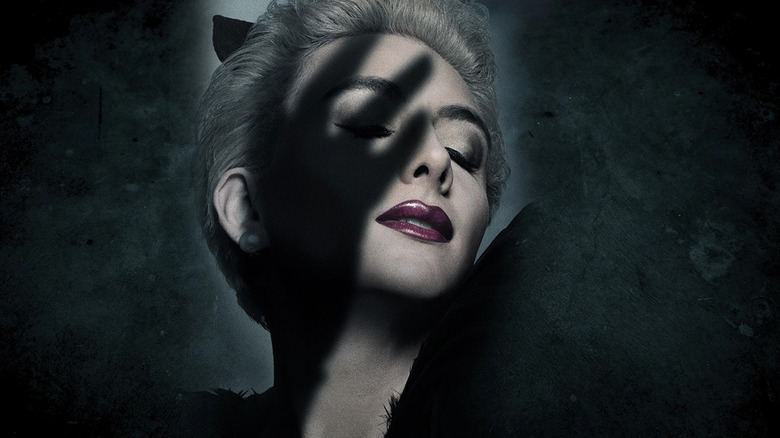Why You Should Keep Watching The Sandman After The First Episode
This post contains spoilers for the first episode of "The Sandman," as well as the opening issue of "The Sandman: Preludes and Nocturnes."
When getting into the "Sandman" comics, a lot of fans will warn first-time readers to stick with the series even if the first few issues don't grab you. Volume 1, "Preludes and Nocturnes" is often ranked at the bottom of the list of favorite "Sandman" volumes, and that's because it's a volume that takes a while to fully find its voice. It's also the series at perhaps its darkest; the Dream of this first volume is often cruel and unsympathetic. He mopes around a lot, and doles out punishments to mortals that seem a little disproportionately harsh. It makes for a fascinating character arc throughout the series, but it can take a while to get invested in a main character's who's, well, kind of a jerk. (Also, his moping never goes away.)
Watching the first episode of the Netflix series, however, it feels like the show overcorrected. The Dream we're introduced to in "Chapter 1: Sleep of the Just," played by Tom Sturridge, is no longer the scary or unsympathetic jerk of the early comics. Instead he's just boring, which is so much worse. Although the show gets better with each passing episode, the first episode fails as an introduction to Dream, or as an introduction to the show in general. As good as the rest of the season gets, the first episode's so bad that most viewers might not even get that far.
A sense of mystery erased
The comics introduce Dream from the perspective of the people who accidentally captured him. The first time we meet the character, he's suddenly trapped inside a magic circle, completely powerless. We don't know what he was doing before he was captured, and we don't know anything yet about his personality. We don't even know for sure that he's the god of dreams until about 14 pages in, when Alex Burgess pieces it together.
Throughout the first issue, all we get are a few little glimpses from Dream's perspective, giving us the impression of a cold, calculating man. We know he badly wants to escape his cage, but he also won't entertain for a second the idea of giving into his captors' demands in order to do so. But beyond that, we don't know much for certain. The first two thirds of the opening issue play out like a sort of mystery story, where the reader is invited to figure out for themself what type of person Dream is. When Dream finally escapes, our suspicions are confirmed: the Burgesses were right to live in fear over what would happen if he got out of his cage.
That sense of mystery is gone in the Netflix show, where we're introduced to Dream via a two-minute voiceover. Not only is the monologue cornier and clumsier than anything in the comics, but it tells us exactly what Dream's whole deal is straight away. Gone is the gradual reveal of the comics. Gone is any idea that we're being asked to actively engage with the story, that we're being invited to read between the lines. We're told everything up front, and that's it.
Cutting the Eternal Waking
Dream's voiceovers continue throughout the episode, removing any ambiguity over what the character's thinking at any point. Not only does it make him less interesting, but it also undermines the show's attempts to flesh out the Burgess family. The comics spend far less time trying to make us sympathize with Alex Burgess, and yet he's easier to identify with because the reader knows just as much about the situation as he does. There, we learned about Dream along with Alex, not beforehand.
The show dedicates a lot more time to depicting Alex as a sympathetic victim of abuse. Perhaps because he's intended to be more likable than his comic counterpart, the show decides to change the punishment Dream gives him. Dream gives him the gift of eternal sleep, which is implied to simply be a normal coma.
But in the comics, Dream's punishment was harsher. Dream calls it Eternal Waking, and we get to see a glimpse of it: Alex keeps waking up from horrifying nightmares, only to immediately find himself in yet another horrifying nightmare, again and again for what feels like an eternity.
It sounds harsh, and that's because it is. Dream is supposed to be a callous god who doesn't fully understand or relate to human suffering. By turning Dream's long-sought revenge into a tame, regular coma, the show softens a character who's only supposed to soften slowly, over the course of the series. It also gives the impression that this show isn't willing to embrace the most uncomfortable parts of the source material; this was the first moment of true horror in the comics, and the show turned it into something tame and forgettable.
An over-sanitized mess
Perhaps the biggest disappointment was how disinterested the opening episode was in exploring the consequences of Dream being captured. In the comics we get quick but detailed accounts of people all over the world affected by Dream's realm falling apart. We get the story of Stefan, a young World War I soldier who suddenly loses the ability to sleep entirely, eventually killing himself after a few years of sleep deprivation destroys his mind. There's also a young girl in Toronto who falls into a coma, and a boy in Jamaica who basically turns into a zombie after decades of no sleep. The comics don't just tell us there's a worldwide sleeping sickness; it makes us feel the effects of it through a series of varied, detailed anecdotes. We see what each of these individual people were like before, during, and after Dream's captivity.
What does the show give us? It simply features a quick, perfunctory scene of young Unity Kinkaid falling into a coma, then barely touches on the worldwide sleep sickness for the rest of the episode. The comics paint a picture of a world that is profoundly damaged as the result of Dream's capture; the show doesn't seem interested in exploring that idea at all, at least not beyond the purely plot-based scenes with Unity.
Rather than hook in new viewers, this opening episode feels like a boring and generic fantasy show. To fans of the comic, the first episode gives off the impression that the show is afraid to embrace any of the more uncomfortable aspects of the source material. "Sleep of the Just" seems more focused on sanding off the source material's rougher edges, more interested in creating something safe and inoffensive than making a show that's unique or compelling.
A season that gets better as you go along
But it's worth remembering that the comics didn't start off that great either. Although the first issues were much stronger than the show's first episode, "The Sandman" series didn't truly become the series we know and love until its sixth issue, "24 Hours." This issue makes up the majority of the show's fifth episode, and comic fans can rest assured the episode very much measures up to the source material. Two other early standouts in the comics were "The Sound of Her Wings," "Men of Good Fortune," and "Collectors," all of which were adapted a lot more faithfully (and a lot more successfully) later in the season.
Dream's voiceovers — perhaps the most blatantly annoying aspect of the first episode — are also gone after the first episode. The show also becomes more comfortable with the comics' horror elements, and Tom Sturridge really starts to settle into his role as Dream. He's still the weakest of all the Endless characters cast so far, but that's more of a testament to how effectively Kirby Howell-Baptiste plays Death, Alexander Mason Park plays Desire, and Donna Preston plays Despair. They all have a wonderful otherworldly quality to them that make their appearances throughout the later episodes a treat to witness.
A show that slowly finds its voice
Although "24 Hours" is a solid adaptation of a terrifying storyline, it's with the sixth episode's "The Sound of Her Wings" that the show takes on a life of its own. It takes three separate standalone issues and not only faithfully adapts them all, but ties them together in a unique, exciting way. By the time I got to the penultimate episode, "The Collectors," all the problems I had with the first episode either disappeared completely or had lessened to the point where it was barely noticeable.
In a way, the first few episodes of "The Sandman" feel a lot like so many other rough debut seasons of shows that later became beloved. Let's not forget that the first season of "Parks and Recreation" was easily its weakest, just as "The Office" didn't really become "The Office" until season 2. Most "Sense8" fans will happily tell you to push through the first episode before deciding if you like the show, and they're right to do so.
Sometimes a show needs a few episodes to work out the kinks, and that definitely seems to be the case here. It's just a lot more stressful this time around because unlike most shows, we know how good the source material gets as the series goes along. We know how much great TV we'll be missing out on if the series' rocky start prevents it from ever reaching beloved volumes like "Season of Mists," or "Brief Lives."
First impressions are important, but they're not everything. If the first episode of "The Sandman" didn't quite work for you, please at least try one episode more.
